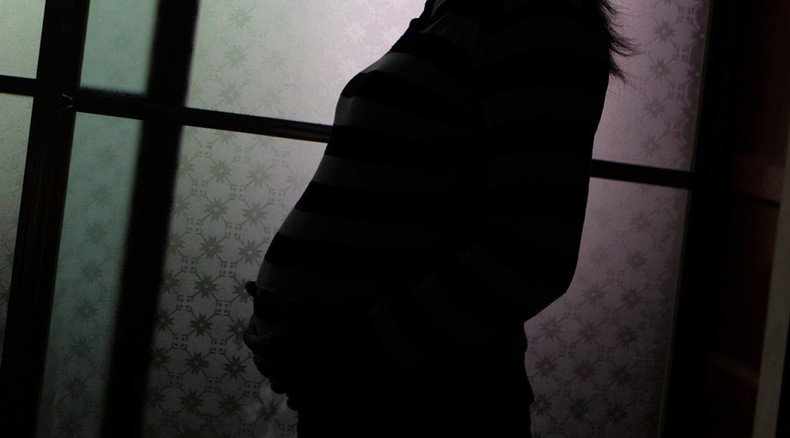Up to 240,000 Texas women have tried to induce their own abortion – report

Almost two percent of Texas women have tried to end their pregnancies on their own during their lifetimes. Taking medical pills or herbs, and even getting hit or punched in the abdomen were among methods used, according to the findings of a new survey.
The Texas Policy Evaluation Project report is based on a survey of 779 women between the ages of 18 and 49 who were polled over a five month period in 2014 and 2015. It found that 1.7 percent admitted to having tried to induce their own abortion. The actual number could be much higher, as women tend to underreport abortion in surveys, according to the report.
When survey participants were asked if they thought their best friend had tried to induce an abortion, an additional 2.3 percent said they suspected that this was so. They applied these percentages to the more than 5.9 million Texas women aged 18 to 49 and estimated that from 100,000 to 240,000 had tried to end a pregnancy on their own without medical assistance.
A preview of things to come post-SCOTUS? - 100,000 Women in Texas Have Tried to Self-Induce an Abortion https://t.co/8YEhiX8DRY via @broadly
— A is For (@AIsForOrg) November 17, 2015“As clinic-based care becomes harder to access in Texas, we can expect more women to feel that they have no other option and take matters into their own hands,” Dr. Daniel Grossman, co-investigator with the Texas Policy Evaluation Project, said in a statement.
In addition, researchers found a variety of socio-demographic factors significantly affect which populations of women try to end their own pregnancies. They found the majority were Latina women living in a county that bordered Mexico. Another high risk group was comprised by women who said it was difficult to obtain reproductive health services like birth control or Pap smears because of the cost or distances involved in traveling to clinics.
“This is the latest body of evidence demonstrating the negative implications of laws like HB2 [law] that pretend to protect women but in reality place them, and particularly women of color and economically disadvantaged women, at significant risk,” Grossman said.
New TxPEP study! At least 100,000 Texas women have attempted self-induced abortion. What will happen if more clinics close? #HB2#SCOTUS
— TxPEP Research (@TxPEPresearch) November 17, 2015Texas’ HB2 law was a sweeping measure enacted in 2013 that imposed numerous restrictions on accessing abortion at women’s health centers. Approximately 20 centers have been closed since the law passed, and if the Supreme Court allows the restrictions to go into full effect, women in Texas will be left with only 10 health centers providing safe, legal abortion in the entire state – down from 40 health centers before the law passed.
Last Friday, the Supreme Court announced that it will review a Fifth Circuit Court of Appeals decision upholding the Texas law — which has been partially blocked for now.
Roe v. Wade up for debate? US Supreme Court to review major abortion case https://t.co/ByygLbVSjQpic.twitter.com/6wiFfD1ar1
— RT America (@RT_America) November 14, 2015Meanwhile, the abortion survey also asked women about what methods they had used to try to end their pregnancies. The report found “only 13 percent of women said they had heard about taking misoprostal,” one of the drugs used in medical abortions.
However, when asked if they knew someone who had attempted to induce abortion using misoprostol, it was given as the most common method. Other methods recorded in the report included “herbs or homeopathic remedies, getting hit or punched in the abdomen, using alcohol or illicit drugs, or taking hormone pills.”
Ana DeFrates, director of the Texas Latina Advocacy Network, said the findings of the report confirmed what they already knew from working with women on the ground in Texas and nationally: that women will use what is “available to make the best reproductive decisions for themselves and their families.”
“And when abortion is stigmatized, not covered by insurance, and/or regulated out of existence, some women will take abortion into their own hands. Some of these women will find safe methods of ending a pregnancy, and some may resort to methods that are dangerous or ineffective. This is happening here in Texas,” DeFrates said in an email to RT.
“A woman who decides to end a pregnancy should be safe and supported, not shamed, coerced, or cut off from care. And finally, no woman should fear arrest for miscarriage, stillbirth, or abortion – or for seeking medical care in any of these settings.”
Texas threatens #PlannedParenthood funding through Medicaid
https://t.co/oVMit0wBdRpic.twitter.com/l99bS7v1qw
— RT America (@RT_America) October 20, 2015Researchers also interviewed 18 women who had attempted to self-induce an abortion in recent years. The chief reason the women gave for choosing to end their pregnancies was poverty. Others felt they had no option due to the inability to travel to a clinic or afford a clinic-based procedure, the closure of a local clinic, or social stigma against abortion. Sometimes a friend or relative had recommended self-induction.
“I didn’t have any money to go to San Antonio or Corpus. I didn’t even have any money to get across town,” said a 24-year-old woman from the Lower Rio Grande Valley.
“I just wanted something to work. I didn’t want to have to spend the money again,” a 26-year-old woman in Corpus Christi recounted. “I didn’t want to have to do the drive. Not to mention, you know, I don’t have other family. My family lives out of country so I’m stuck in this town by myself…. I have to find somebody who’s willing to drive me two and a half hours and back.”












